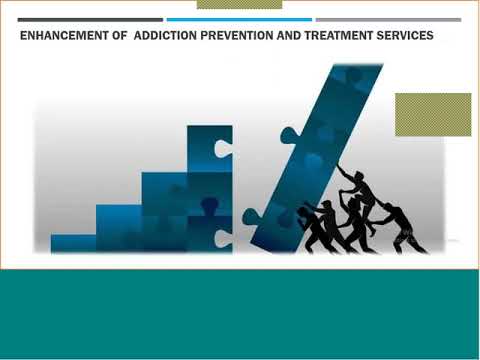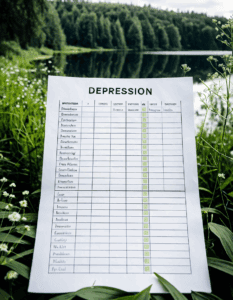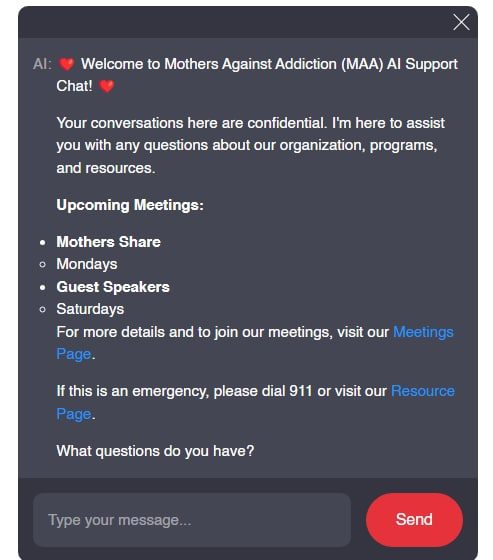Understanding the Need for Supporting Addiction Policy Changes
Supporting addiction policy changes is paramount as we enter 2024, given the increasingly complex landscape of addiction and recovery. This isn’t just about legislation – it’s a comprehensive movement involving every stakeholder from policymakers to families affected by addiction. The public perception Of addiction is evolving, but there’s still a pressing need for policies that understand and address the multifaceted nature of addiction and recovery.
In today’s world, addiction doesn’t only harm those directly affected by it; it leaves a ripple effect that touches entire communities. The changes in addiction policy must embody compassion, understanding, and resilience, providing a framework that allows individuals and their families to rebuild and thrive. By supporting addiction policy changes holistically, we can better equip our healthcare systems and support networks to handle this pervasive issue.
Key Elements of Effective Addiction Policy Changes
1. Emphasizing Harm Reduction Strategies
A significant shift in addiction policy over recent years has been toward harm reduction, which is both practical and humane. Countries like Portugal have implemented harm reduction models to great success, dramatically cutting overdose deaths and improving public health. They’ve shown that by shifting the focus from punishing users to reducing the negative impacts of drug use, we can save lives and foster healthier communities.
Supervised injection sites and the widespread distribution of naloxone are two critical harm reduction strategies. At facilities like Vancouver’s Insite, the first legal supervised injection site in North America, users have a safe space to inject under medical supervision, which has drastically reduced overdose deaths and connected many with social and healthcare services. Such innovative approaches provide a template for supporting addiction policy changes that prioritize human life and dignity.
2. Expanding Access to Medication-Assisted Treatment (MAT)
Medication-Assisted Treatment (MAT) involves using medications such as methadone, buprenorphine, and naltrexone to treat opioid addiction, often in combination with counseling and behavioral therapies. Despite proven effectiveness, access to these treatments is limited in many regions. States like Vermont and Rhode Island are leading the way by incorporating MAT into their broader healthcare systems, showing us the tangible benefits of support.
Expanding access across the country could be a game-changer. Such policies would ensure that individuals struggling with addiction receive consistent, reliable medical care, facilitating smoother recoveries and reducing relapses. This is crucial for bridging the gap between initial recovery and long-term stability.
3. Integrating Mental Health Services
Addiction often goes hand in hand with mental health disorders, requiring policymakers to integrate these services into addiction treatment plans. The Mental Health Parity and Addiction Equity Act (MHPAEA) was a significant step forward, but proper enforcement is vital. Efforts must focus on ensuring that mental health care is an integral component of addiction treatment programs.
Organizations like the National Alliance on Mental Illness (NAMI) advocate for such holistic approaches, recognizing that mental health care and addiction treatment are inseparable. By supporting addiction policy changes that integrate mental health services, we can create more comprehensive and effective treatment programs that address all facets of addiction.
| Aspect | Description |
| Policy Inclusions | * Prohibited Substances: List of banned substances. |
| * Guidelines for Consumption: Criteria and limits for legal consumption. | |
| * Testing Procedures: Frequency and types of testing; methods for ensuring accuracy and fairness. | |
| * Disciplinary Actions: Clear penalties for violations; rehabilitative measures. | |
| Psychoeducational Groups | * Structure: Structured, group-specific content. |
| * Content Delivery: Use of videotapes, audiocassettes, or lectures. | |
| * Purpose: Educate clients about substance abuse, related behaviors, and consequences. | |
| Stages of Change Model | * Precontemplation: Not ready to change. |
| * Contemplation: Getting ready to change. | |
| * Preparation: Ready to take action. | |
| * Action: Actively making changes. | |
| * Maintenance: Sustaining long-term behavior change. | |
| Policy Benefits | * Health Improvement: Reduced substance abuse leads to overall public health improvement. |
| * Safety: Lower incidence of addiction-related accidents and crimes. | |
| * Economic: Reduced healthcare and law enforcement costs. | |
| * Social: Stronger communities through support and rehabilitation of affected individuals. | |
| Implementation Strategies | * Education Campaigns: Raising awareness through workshops, seminars, and media. |
| * Legislative Advocacy: Lobbying for policy changes at local, state, and national levels. | |
| * Collaboration: Partnering with healthcare providers, educators, and law enforcement. | |
| * Monitoring & Evaluation: Regular assessments to ensure policy effectiveness and compliance. |
Case Studies: Exemplary Models of Addiction Policy Reforms
Switzerland’s Heroin-Assisted Treatment
Switzerland’s heroin-assisted treatment (HAT) program, which started in 1994, stands as a remarkable example of innovative addiction policy. The program provides medically supervised heroin to chronic users who haven’t succeeded with other treatments. Since its implementation, there has been a substantial reduction in overdose deaths, HIV infections, and crime rates. Participants have found stability and improved their overall quality of life, proving the program’s success and the potential of such progressive policies.
Vancouver’s Insite Safe Injection Site
Insite, the first legal supervised injection site in North America, located in Vancouver, British Columbia, marks another success story in harm reduction. By providing a safe space for drug use under medical supervision, Insite has drastically reduced overdose deaths and provided users with vital connections to social and healthcare services. Its model has inspired similar sites across Canada, showcasing how supportive policy changes can make significant differences in public health and safety.
Policy Recommendations for Improving Addiction Services
Strengthening Federal and State Collaboration
To effectively support addiction policy changes, robust collaboration between federal and state governments is essential. Consistency in funding, strategic planning, and implementation will foster a united front against addiction. The Substance Abuse and Mental Health Services Administration (SAMHSA) is pivotal in this process, offering guidance and resources vital for successful policy changes.
Enhancing Public Education and Awareness Campaigns
Stigma is a significant barrier to effective addiction policy. Comprehensive public education campaigns can play a crucial role in reshaping attitudes and fostering supportive environments for those affected by addiction. The “Shatterproof” campaign is a prime example, successfully promoting understanding and reducing stigma through education and powerful personal stories. Campaigns like these are indispensable for public support in the fight against addiction.
Innovative Solutions and Future Directions
As we look to the future, supporting addiction policy changes will require embracing innovative solutions. Telehealth has already revolutionized access to addiction treatment, particularly in rural areas, and integrating technology further can bridge remaining gaps. Additionally, investing in research to understand the genetic and environmental factors of addiction will yield more effective, individualized interventions.
In the quest to support addiction policy changes, it’s essential to cover all aspects of the issue—from harm reduction and medication access to mental health integration. By learning from successful models worldwide and pushing for collaborative, forward-thinking strategies, we can make a significant impact on the lives of those affected by addiction. Our combined efforts can pave the way for a healthier, more compassionate society where recovery is always possible.
To keep up with evolving public perception of addiction and clear up any Misconceptions about addiction, continuous education and legislative efforts are essential. Developing addiction policies that consider these human elements will bring us closer to a society that treats addiction with the seriousness and empathy it deserves.
Support for addiction policy changes is not just a matter of strategy but a deeply compassionate gesture to ensure that everyone has the opportunity to recover and lead fulfilling lives. The role of policies, laws, and communal effort in this journey cannot be overstated, and moving forward with empathy and innovation is our best bet for a brighter future. Visit Mothers Against Addiction for more resources and support in navigating this challenging path.
Supporting Addiction Policy Changes: Essential Insights
Understanding the Legal Rights
When supporting addiction policy changes, one must grapple with various legal Rights For Addicts. Did you know that these rights protect addicts from discrimination in employment, housing, and education? As more awareness grows, it’s vital for everyone to familiarize themselves with these regulations to advocate effectively for change.
Odd Yet Interesting Facts
Sometimes, while discussing serious topics like addiction policy changes, diving into unexpected trivia can lighten the mood. For instance, ever heard of Brooke greenberg? She was a remarkable girl who stopped ageing mentally and physically, offering insights into human biology that could indirectly inform addiction studies.
Also, curious about some unusual remedies people swear by? Rubbing Vicks on Feet as a home remedy is one such quirky habit. Who knows, understanding these quirky human behaviors might help in comprehending how unconventional approaches can sometimes offer unexpected support in addiction recovery.
Popular Culture Reflections
Pop culture can shape and reflect public attitudes toward addiction. Fans eagerly awaiting the Attack on Titan season 4 Part 3 dub release date might be intrigued to learn how media representations influence public opinion on addiction. From nuanced portrayals of struggle to glorified binge behaviors, media has a substantial impact.
And let’s not forget historical figures like Mark Felton, whose work underscores the importance of historical context in shaping current policies. Felton’s deep dives into history remind us that understanding past societies can illuminate the path forward for fostering effective addiction policy changes today.
Staying informed and engaged through diverse lenses—from pop culture and history to quirky home remedies—can foster a well-rounded and inclusive approach to supporting addiction policy changes. This ensures we advocate for holistic, informed, and empathetic solutions in the fight against addiction.

What should be included in a substance abuse policy?
A substance abuse policy should detail what substances are banned, provide guidelines for appropriate usage, outline how testing will be done, and specify the disciplinary actions for not following the rules.
How can addiction be improved?
Improving addiction involves treatment methods such as therapy, medication, support groups, and lifestyle changes. It often requires a multi-faceted approach tailored to the individual’s needs.
What are the different types of support for substance abuse?
Support for substance abuse comes in many forms including individual therapy, group therapy, support groups like AA or NA, medication-assisted treatment, and residential rehabilitation programs.
What is the change process in addiction?
The change process in addiction follows five stages: precontemplation (not ready to change), contemplation (considering change), preparation (planning for change), action (actively working on change), and maintenance (sustaining the change).
What are two important factors that should be considered when developing an effective drug policy?
Two important factors in developing an effective drug policy are clearly defining the prohibited substances and ensuring there are fair and consistent testing and enforcement procedures.
What are the objectives of substance abuse policy?
The objectives of a substance abuse policy are to maintain a safe environment, provide clear guidelines on substance use, prevent drug misuse, and support individuals who may need help with addiction.
What are 3 ways to overcome addiction?
Three ways to overcome addiction include seeking professional help through therapy or rehab, joining support groups like AA or NA, and creating a strong personal support network of friends and family.
What is most effective in treating addiction?
The most effective treatment for addiction is a combination of medication, therapy, and support groups, tailored to the individual’s specific needs and circumstances.
What are management strategies for drug abuse?
Management strategies for drug abuse include providing education and awareness programs, offering support resources, implementing strict policies, and promoting a healthy work and social environment.
What are the intervention strategies for substance abuse?
Intervention strategies for substance abuse involve using techniques such as motivational interviewing, family interventions, professional counseling, and sometimes legal action to encourage the individual to seek treatment.
What are substance abuse prevention programs?
Substance abuse prevention programs aim to educate individuals about the risks of drug use, promote healthy lifestyles, provide support and resources to avoid drug use, and develop community-based initiatives to reduce substance abuse.
What are the three levels of prevention for substance abuse?
The three levels of prevention for substance abuse are primary prevention (preventing drug use before it starts), secondary prevention (intervening early in drug use to prevent escalation), and tertiary prevention (helping those already affected by drug use to recover and prevent further harm).
What are the 5 changes of change in recovery?
The five stages of change in recovery are precontemplation, contemplation, preparation, action, and maintenance. Each stage represents a different level of readiness to change behavior related to addiction.
What are the four C’s of addiction?
The four C’s of addiction are craving (intense desire for the substance), loss of control (inability to limit use), compulsion (feeling compelled to use), and continued use despite consequences.
What is motivation to change in addiction recovery?
Motivation to change in addiction recovery is driven by personal recognition of the need for change, a desire for a better quality of life, and the support and encouragement from loved ones and professionals.
What is substance abuse policies?
Substance abuse policies are formal guidelines established by organizations to control and manage the use of substances, ensuring a safe and healthy environment for everyone involved.
What is an example of a drug-free workplace policy?
An example of a drug-free workplace policy includes prohibiting the use of illegal drugs, detailing the consequences of violations, offering support for employees struggling with addiction, and providing regular drug testing.
How to write a drug policy?
Writing a drug policy involves clearly stating the purpose, defining prohibited substances, outlining testing methods, specifying consequences for violations, and offering resources for those seeking help.
What are the three elements of a substance abuse program?
The three elements of a substance abuse program are prevention (avoiding the start of substance use), treatment (helping those with substance use issues), and recovery support (aiding long-term recovery and preventing relapse).




























